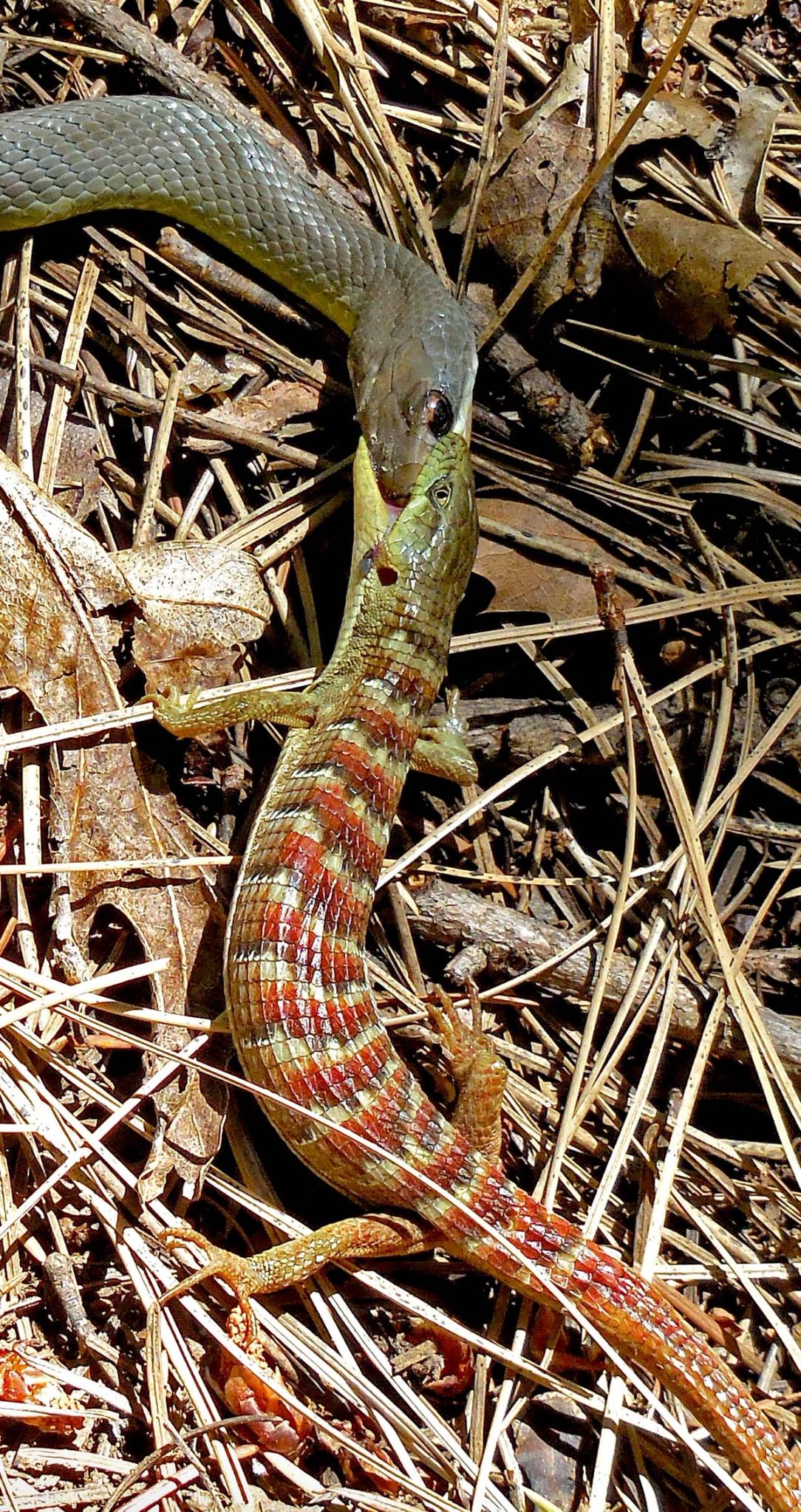
Yellow-bellied Racer and a Sierra Alligator Lizard in Battle! Photo by Carl Butz.
It’s Reptile Weather! The daytime temperatures have been in the 70’s lately, and reptiles have become very active and visible. Reptiles are cold-blooded, meaning they do not have the ability to regulate their body temperature internally and instead depend on external sources to warm or cool their bodies. They adjust their body temperature by moving to warmer or cooler areas in their environment, basking in the sun or hiding in the shade. Temperatures in the 90’s are too hot for reptiles. Temps below 60 degrees are too cold for reptiles.
A friend of mine, Carl Butz, came across a Yellow-bellied Racer and a Sierra Alligator Lizard locked in battle (above photo) on his property! His presence made them let go of each other, and go on their separate ways! How cool and unusual to see a sight like that! What a photo! WOW!!!

Sierra Alligator Lizard — Elgaria coerulea palmeri
I saw this Sierra Alligator Lizard in my neighborhood this week. It was missing its tail! Lizards can dislocate their tails if a predator threatens them. The piece of tail will wriggle around like it is still alive for several minutes after it is dislocated! This will distract the predator and allow the lizard to escape. It will take up to 60 days for the lizard to regrow a tail. The new tail is never identical to the original, as it is almost always shorter and has a different pattern of tiny scales. Glad this lizard eluded a predator!
The following information about Alligator Lizards is from californiaherps.com.
“Sierra Alligator Lizards have large scales, a long alligator-like snout, light-colored eyes, and a longitudinal fold on the lower sides of the body. They can be fairly large in size. Active during daylight, they are frequently seen moving on the ground, and occasionally up in bushes. Alligator lizards do not typically bask in the sun out in the open or on top of a rock like many other lizard species.”

Northern Pacific Rattlesnake — Crotalus oreganus oreganus
My friend Keith came by and told me that there was a Rattlesnake in the middle of the road, if I wanted to take a photo. So OF COURSE I walked down the road with him to see the rattler! It was right in the sunny middle of the road, about middle sized, and definitely alive! After I took a few photos we nudged it off the road with a very long stick. It was amazing to see how fast it moved, and how camouflaged it was among the pine needles!
Most Northern Pacific Rattlesnakes are active from dusk to dawn, looking for prey.
Your questions and comments are appreciated. Please feel free to email me at northyubanaturalist@gmail.com. Thanks!
Featured Articles

PUSD Approves Mass Layoffs Amid Budget Crisis →
March 24, 2025
PUSD faces a $3 million deficit, approving mass layoffs of 29 staff to avoid state takeover.
Sierra County Sheriff’s Office Gains New Deputy →
March 25, 2025
Kiley Fields Questions in Well-Attended Virtual Town Hall →
March 19, 2025
State Takes $3.4 Billion from General Fund for Medi-Cal →
March 18, 2025
Lost Dog Found Shot Dead, Says Sierra County Sheriff →
March 19, 2025